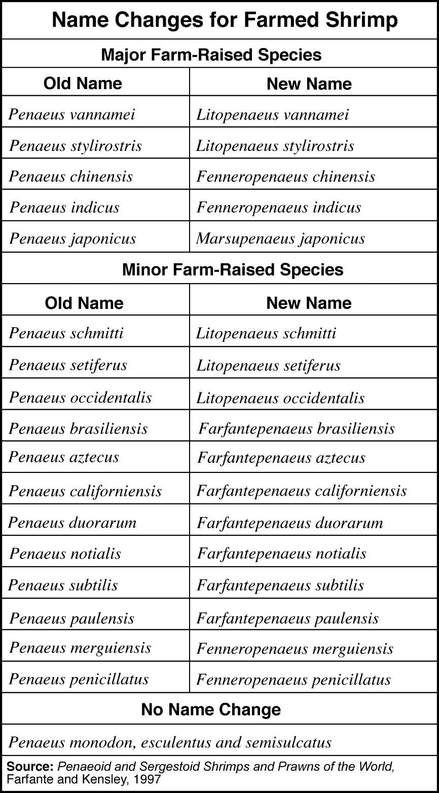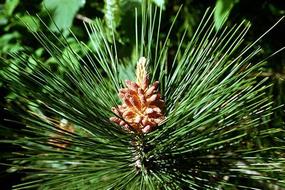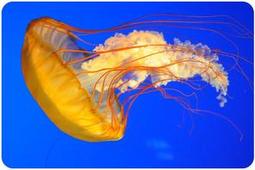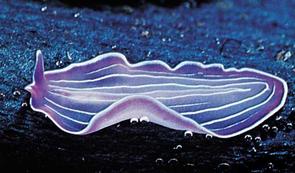topic 5.3: classification and biodiversity
 image from Socratic
image from Socratic
In the unit of Classification of biodiversity you will how the Swedish botanist Carolus Linnaeus originally invented the binomial system to help him consistently name plants he identified. The system was eventually adopted by other scientists and remains to the accepted naming system for species. Though species may have many common names to avoid confusion scientists always use the (scientific) binomial name.
This unit will last 4 school days
This unit will last 4 school days
Essential idea:
- Species are named and classified using an internationally agreed system.
Nature of science:
- Cooperation and collaboration between groups of scientists—scientists use the binomial system to identify a species rather than the many different local names. (4.3)
- Outline why the binomial naming system is used in science rather than local names.
- State the role of Carl Linnaeus in naming species.
Understandings:
5.3.U1 The binomial system of names for species is universal among biologists and has been agreed and developed at a series of congresses.
- Outline the role of botanical and zoological congresses in the naming of plants and animals.
The binomial system of nomenclature is the formal system by which all living species are classified (taxonomy). It was initially developed by a Swedish botanist named Carolus Linnaeus in 1735.
The binomial system of nomenclature provides value because:
- Normal two naming system of classifying species.
- Currently, many scientists and specialists meet in a series of International Congresses of Zoology which meet in different cities every 4 years
- They meet to discuss their findings regarding genetics, animal behaviour and classification
- A main topic is the binomial nomenclature system and decisions regarding the classification of new organisms or the reclassification of old ones because of new evidence regarding ancestry.
The binomial system of nomenclature provides value because:
- It allows for the identification and comparison of organisms based on recognised characteristics
- It allows all organisms to be named according to a globally recognised scheme
- It can show how closely related organisms are, allowing for the prediction of evolutionary links
- It makes it easier to collect, sort and group information about organisms
5.3.U2 When species are discovered they are given scientific names using the binomial system
- Define binomial nomenclature.
- State three rules of binomial nomenclature formatting.
A formal two naming system of classifying species. The first name in the binomial naming system is called the genus and is always capitalized. The second name starts with a small letter and is called the species.
The binomial system allows for scientists across cultures, regions and languages to communicate effectively with regards to specific organisms.
species = the natural basic grouping of organisms
The binomial system allows for scientists across cultures, regions and languages to communicate effectively with regards to specific organisms.
species = the natural basic grouping of organisms
- a group of organisms with similar characteristics
- which can interbreed
- and produce fertile offspring
- a group of similar species
- first name = genus, written in italics, if in type, or underlined if not, with the first letter in upper case
- second name = species, written in italics, if in type, or underlined if not, all letters in lower case
5.3.U3 Taxonomists classify species using a hierarchy of taxa.
- Define taxon and taxonomist.
- List the hierarchy of taxa, from largest to smallest.
Taxonomy is the science involved with classifying groups of organisms on the basis of shared characteristics. Organisms are grouped according to a series of hierarchical taxa – the more taxa organisms share, the more similar they are.
The taxa used are kingdom, phylum, class, order, family, genus and species (genus + species = scientific name)
The taxa used are kingdom, phylum, class, order, family, genus and species (genus + species = scientific name)
- A taxon means a group of something
- Scientists arrange or organize species in to a hierarchical set of groups in order to organize organisms into specific similar groups based on similar characteristics
- As one goes higher up on a classification chart, the greater the number of species are included into the group
5.3.U4 All organisms are classified into three domains.
[Archaea, eubacteria and eukaryote should be used for the three domains. Members of these domains should be referred to as archaeans, bacteria and eukaryotes. Viruses are not classified as living organisms.]
[Archaea, eubacteria and eukaryote should be used for the three domains. Members of these domains should be referred to as archaeans, bacteria and eukaryotes. Viruses are not classified as living organisms.]
- State the two groups of prokaryotes.
- List the three domains of life.
- Outline differences between the three domains of life.
- Draw a tree diagram to illustrate the evolutionary relationship between organisms of the three domains.
Currently, all living organisms are classified into three domains. Archaea, eubacteria and eukaryote should be used for the three domains:
Members of these domains should be referred to as archaeans, bacteria and eukaryotes.
- Eukarya – eukaryotic organisms that contain a membrane-bound nucleus (includes protist, plants, fungi and animals)
- Archaea – prokaryotic cells lacking a nucleus and consist of the extremophiles (e.g. methanogens, thermophiles, etc.)
- Eubacteria – prokaryotic cells lacking a nucleus and consist of the common pathogenic forms (e.g. E. coli, S. aureus, etc.)
Members of these domains should be referred to as archaeans, bacteria and eukaryotes.
- The Archaea and Bacteria domains are prokaryotes. These are organisms that do not have a membrane bound nucleus and their DNA is not associated with proteins.
- The Bacteria domain consists of Eubacteria and archaebacteria are classified as Archaeans.
- The Eukarya domain includes eukaryotes, or organisms that have a membrane bound nucleus. This domain is further subdivided into the kingdoms Protista, Fungi, Plantae, and Animalia
- Groups organisms primarily based on differences in ribosomal RNA structure. Ribosomal RNA is a molecular building block for ribosomes.
5.3.U5 The principal taxa for classifying eukaryotes are kingdom, phylum, class, order, family, genus and species.
- List the four kingdoms of eukaryotes.
- List the hierarchy of taxa, from largest to smallest.
5.3.U6 In a natural classification, the genus and accompanying higher taxa consist of all the species that have evolved from one common ancestral species.
- Define natural classification.
- List two difficulties in determining the natural classification of species.
For natural classification, it is assumed that all members of that group shared a common ancestor at some point in their history. This can be seen in their structure. Unnatural or artificial classification for example would be birds and flies. They both can fly; however flight evolved separately, and they are classified separately
5.3.U7 Taxonomists sometimes reclassify groups of species when new evidence shows that a previous taxon contains species that have evolved from different ancestral species.
- List two situations in which the reclassification of a species may be necessary.
- Outline an example of a species (or group of species) which were reclassified when new evidence was discovered
Sometimes new evidence is found that shows scientists that members of a particular group do not share a common ancestor as once originally thought. Sometimes other species that were once thought to be a lot different, are found to be more similar; sharing a common ancestor. This switching of classification is an ongoing process as new discoveries or better methods of classification are found.
5.3.U8 Natural classifications help in identification of species and allow the prediction of characteristics shared by species within a group.
- Explain two specific advantages of natural classification.
Historically, there have been two main classification schemes used to identify living organisms – artificial and natural classification. Both use prominent features as the basis for classification, however differ in the way these characteristics are established
Natural classification is very useful for research into biodiversity. It is easier in identification of new species that do not obviously fit into a specific classification (Kingdom --> Phylum --> Class à etc.)
- Artificial classification involves arbitrarily selecting unifying characteristics first and then grouping organisms accordingly
- Natural classification involves grouping organisms based on similarities first and then identifying shared characteristicsA third type of classification – phylogenetic classification – is now being used to differentiate organisms based on genetics
Natural classification is very useful for research into biodiversity. It is easier in identification of new species that do not obviously fit into a specific classification (Kingdom --> Phylum --> Class à etc.)
- A dichotomous key could be used to put an organism into a classification that fits that organism the best
- This would not work as well for artificial classification (eg. Colour of flower petals)
- Since organism evolved from a common ancestor, new species would share similar characteristics (likely internal), allowing for easier identification and classification. For example the pentadactyl limb, or mammary glands in mammals
List characteristics observed in this new species which was recently found in the Cambodian rainforest
HINT 1: It is not a worm or a snake
HINT 2: It's scientific name is Ichthyophis cardamomensis
HINT 3: It belongs to the CLASS Amphibia
HINT 2: It's scientific name is Ichthyophis cardamomensis
HINT 3: It belongs to the CLASS Amphibia
Why use classification?
- Practicality - easy to use and speeds up communication
- Information Content - summarization of characteristics about organisms in a species and makes it easy to find
- Predictivity - can be used to predict features of other organisms within the group.
Application
A 5.3.1 Classification of one plant and one animal species from domain to species level.
- State the classification of a plant, from domain to species.
- State the classification of an animal, from domain to species.
All plant and animal species belong to the same domain (Eukarya) as they are composed of eukaryotic cells. Beyond this point plants and animals differ in their classification as they belong to different kingdoms (Plantae vs Animalia)
A 5.3.2 Recognition features of bryophyta, filicinophyta, coniferophyta and angiospermophyta.
[Students should know which plant phyla have vascular tissue, but other internal details are not required.]
[Students should know which plant phyla have vascular tissue, but other internal details are not required.]
- State the four major plant phyla.
- Outline the differences between the four major plant phyla in regard to external recognition features.
- Identify the phyla of plant given external recognition features.
You should know which plant phyla have vascular tissue, but other internal details are not required.
|
angiospermophyta: flowering plants
|
A 5.3.3 Recognition features of porifera, cnidaria, platyhelmintha, annelida, mollusca, arthropoda and chordata
.(Recognition features expected for the selected animal phyla are those that are most useful in distinguishing the groups from each other and full descriptions of the characteristics of each phylum are not needed.]
.(Recognition features expected for the selected animal phyla are those that are most useful in distinguishing the groups from each other and full descriptions of the characteristics of each phylum are not needed.]
- State seven major animal phyla.
- Outline the characteristics of seven major animal phyla.
- Identify the phyla of animal given external recognition features
Recognition features expected for the selected animal phyla are those that are most useful in distinguishing the groups from each other and full descriptions of the characteristics of each phylum are not needed
A 5.3.4 Recognition of features of birds, mammals, amphibians, reptiles and fish
- Contrast chordate and vertebrate.
- State five major classes of chordata.
- Outline the characteristics of five major vertebrate classes.
- Identify the vertebrate class of animal given external recognition features.
Skill
S 5.3.1 Construction of dichotomous keys for use in identifying specimens.
- Explain the use of a dichotomous key in the identification of a specimen.
- Create a dichotomous key given a sample of known specimens.
A dichotomous key is a key constructed from a series of statements arranged into pairs..
Example for the Kingdom Animalia (using some of the characteristics from the above)
Symmetry
Digestive
Exoskeleton
Body structure
Mouth
Locomotion
Exoskeleton
- The two descriptions should represent separate choices or characteristics that determine the difference between two organisms.
- Both choices are read and compared with the organism to be identified.
- If the first characteristic is present in the organism to be identified follow the instructions at the end of the statement. If the characteristic is not present go to the second statement as this should be true.
- Once a choice is made, that selection directs you to another pair of descriptive statements.
- One statement might identify the organism or lead you further on in the key.
- This process is repeated until a successful identification is obtained.
Example for the Kingdom Animalia (using some of the characteristics from the above)
Symmetry
- Has bilateral symmetry go to 2
- Has radial symmetry go to 3
Digestive
- Has mouth and anus go to 4
- Has only one opening for mouth and anus go to 5
Exoskeleton
- Secretes hard exoskeleton made from CaCO3 Stony corals
- Soft exoskeleton go to 6
Body structure
- Has segmented body go to 7
- No segmentation with mantle Octopus
Mouth
- Has suckers and hooks for attachment Tapeworm
- No suckers or hooks Planaria
Locomotion
- Move on surface beneath it by an adhesive foot Sea Anemone
- Move by propulsion of water Jellyfish
Exoskeleton
- Hard exoskeleton with jointed appendages Scorpion
- Soft outer skeleton with bristles Earthworm
Key Terms:
|
binomial nomenclature
hierachy porifera arthropoda natural classification birds eukaryotes |
taxa
order bryophyta cnidaria chordata organism mammals prokaryotes |
kingdom
family filicinophyta platyhelminthes dichotomous key fish taxonomy domain |
phylum
genus coniferophyta annelida common ancestor amphibians species |
class
species algospermophyta mollusca ITIS reptiles binomial name hierarchy of taxa |
Class Materials:
Domain and Kingdom worksheet
Phyla of Invertebrates worksheet
Phyla of Plants worksheet
Classification self quiz (pdf)
Invertebrate Phyla classification worksheet
Spiders and Beetles classification
Taxonomy and Classificaiton worksheet
Diversity notes templates (page 1, page 2, page 3 and page 4).
Animal diversity lab - observe and classify preserved specimens while viewing mini presentations: porifera (pdf), cnidarian (pdf), platyhelminthes (pdf), molluska (pdf), annelidda (pdf), arthropoda (pdf), echinodermata (pdf), and chordata (pdf).
Skull dichotomous key lab (pdf)
Domain and Kingdom worksheet
Phyla of Invertebrates worksheet
Phyla of Plants worksheet
Classification self quiz (pdf)
Invertebrate Phyla classification worksheet
Spiders and Beetles classification
Taxonomy and Classificaiton worksheet
Diversity notes templates (page 1, page 2, page 3 and page 4).
Animal diversity lab - observe and classify preserved specimens while viewing mini presentations: porifera (pdf), cnidarian (pdf), platyhelminthes (pdf), molluska (pdf), annelidda (pdf), arthropoda (pdf), echinodermata (pdf), and chordata (pdf).
Skull dichotomous key lab (pdf)
Powerpoint and Notes on Topic 5.3 from Chris Payne
Your browser does not support viewing this document. Click here to download the document.
Your browser does not support viewing this document. Click here to download the document.
Correct use of terminology is a key skill in Biology. It is essential to use key terms correctly when communicating your understanding, particularly in assessments. Use the quizlet flashcards or other tools such as learn, scatter, space race, speller and test to help you master the vocabulary.
External Links:
Biological classifications
Invertebrate phyla cards and dichotomous key
Paired groups key-making activity: Spiders vs Beetles
Butterfly Chart, of species at Taman Kupu2 Cihanjuang
The Queensland Government Shark ID guide.
There is also a great Environmental Science course online here: The Habitable Planet
Tree of Life interaction
Wayne's World Animal Phyla
How many species are there on Earth?
A good question, and the subject of much research. This recent paper on PLOS Biology estimates 8.7 million. For a good write-up of the story, including an explanation of the diagram, head over to Carl Zimmers’ The Loom blog:
Click here to access a website that shows video clips of different organisms of the kingdom PROTISTA.
An AMOEBA in action!
Euglena swimming, and dividing. How do unicellular organisms divide?
Paramecium video clips. how do paramecium move?
Contractile vacuole in a paramecium.
PARAMECIUM.
AMOEBA. Binary Fission Info
In the News:
International mindedness:
- There are international codes of nomenclature and agreements as to the principles to be followed in the classification of living organisms.
TOK:
- The adoption of a system of binomial nomenclature is largely due to Swedish botanist and physician Carolus Linnaeus (1707–1778). Linnaeus also defined four groups of humans, and the divisions were based on both physical and social traits. By 21st-century standards, his descriptions can be regarded as racist. How does the social context of scientific work affect the methods and findings of research? Is it necessary to consider the social context when evaluating ethical aspects of knowledge claims?
Video Clips:
|
|
|
Hank tells us the background story and explains the importance of the science of classifying living things, also known as taxonomy.
Hank introduces us to comparative anatomy, which studies the similarities and differences in animal anatomy to support the theory of evolution and the shared ancestry of living things
Hank continues our exploration of animal phyla with the more complexly organized annelida and arthropoda, and a biolography on insects.
Individual specimens may hold great beauty in the eye of the uninitiated observer, but for scientists, the real wonder lies in the connections that inspire research questions. Herpetology Curator Darrel Frost talks taxonomy—the science of classification.
Classify this monster jellyfish:

























